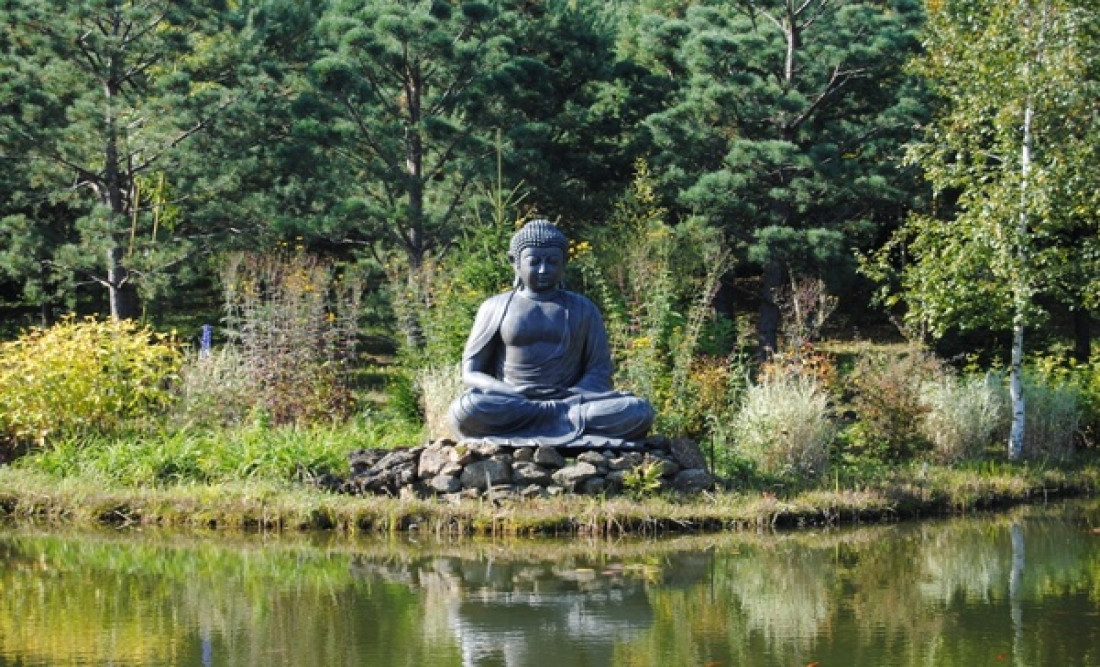Gautama Buddha and Vipassana Meditation Yoga

Hello Friends, Welcome to another Blog of WordictPost. In this Blog we are going to read about Gautama Buddha and Vipassana Meditation Yoga, let's go!.
The Buddha says: "Do not believe in God, as the scriptures say; Believe only when you see. Buddha says: Therefore do not even believe what I say. If you agree then you will miss To see, see. And philosophy is liberating. Assumptions make Hindus, Muslims, Christians, Jains, Buddhists; Darshan unites you with the divine. Then you are neither Hindu, nor Muslim, nor Christian, nor Jain, nor Buddhist; Then you are divine. And to get the same experience. That experience is worth it."
Gautama Buddha was born in Lumbini near Kapilvastu, the capital of the Shakya , in Nepal between 563 BC. Mahaplaya Mahaplai Devi of Kapilavastu suffered childbirth on her way to Devadah and there she gave birth to a child Delivered. The infant was named Siddhartha. Because of his birth in the Gautama gotra, he was also called Gautama. Kshatriya king Shuddhodana was his father. According to the traditional legend, Siddharth's mother died seven days after his birth. He was raised by his aunt and Mahaprajavati (Gautami), the second queen of Shuddodhan. The baby was named Siddhartha, which means "one who was born to attain Siddhi".
Siddhartha not only read the Vedas and Upanishads with Guru Vishwamitra, he also studied Rajkaja and war-lore. At the age of sixteen, Siddharth was married to the girl Yashodhara. He lived with Yashodhara in the palace, rich in grandeur and all the indulgences made by his father in the form of seasons where his son Rahul was born. Siddhartha left for penance after leaving the state's fascination like beautiful wife Yashodhara, Dudhunmeh Rahul and Kapilvastu. He reached the Rajgriha. Asked alms there. While walking around, Siddharth reached Alar Kalam and Uddak Ramputra. I learned yoga and meditation from him. Learned to trance. But he was not satisfied with that. He reached Uruvela and started doing penance in various ways there.
On the day of Vaishakhi Purnima, Siddhartha was meditating under the Vatavriksha. Sujata, a woman from a nearby village, had a son. He considered a vatavriksha for a son. He appeasement to the whole platter of gold reached cow milk pudding filling. Siddharth was sitting there meditating. He felt that it is as if the deity is sitting there holding his body to worship. Sujatha offered Kheer to Siddharth with great respect and said - 'Just as my wish is fulfilled, so should you be.' Siddhartha's meditation succeeded on meditating that very night. He realizes. Since then Siddhartha has been called 'Buddha'. The peepal tree under which Siddharth got realization is called Bodhivriksha and the place near Gaya is Bodh Gaya.
What is Vipassana - Vipassana is the most important meditation practice in the history of mankind. Vipassana is unique! The word vipassana means: looking, looking back. The Buddha used to say: Ihi pasiko, come and see! Buddha does not insist on any belief. It is not necessary to follow the Buddha's path, not to believe in God, nor to believe in the soul. The religion of Buddha is the only religion on this earth which does not require any recognition, prejudice, belief etc. The religion of Buddha is the only scientific religion. Buddha says: Come and see. There is no need to agree. Look, then accept. And whoever has seen, one does not have to believe; Have to accept. And the process of seeing the Buddha, the process of showing it was called Vipassana. This is the most ancient practice of self-purification through introspection. About 2500 years ago, Lord Gautam Buddha re-researched this extinct method and made it universal as universal cure for universal disease, the art of living. The purpose of this universal practice is to achieve complete elimination of disorders and a state of omnipotence. The purpose of this spiritual practice is not only to overcome physical diseases, but also to remove all the sufferings of human beings. The practice of Chittha Vidhidhana helps us to live a life of happiness while neutrally observing the momentary events of our own body and Chitthara. We can experience peace and harmony within us. The scientific rules that our thoughts, disorders, feelings, sensations follow, are clear. From our direct experience, we know how disorders are formed, how bonds are formed and how to get rid of them. We become alert, alert, restrained and peaceful.
How to do Vipassana - This is a very simple experiment. Witnessing your breathing. Breathing is life. The breath is the bridge. Beyond this is the body, beyond that is Chaitanya, in the middle is breathing. This is the difference between Pranayama and Vipassana. In Pranayama, there is an attempt to change the breath, in Vipassana, there is an aspiration to see the same breath. As it is - rugged, good, bad, fast, quiet, running, running, stagnating, as it is!
Buddha says, if you try and somehow employ the breath, then there will never be great results from the effort. The effort is yours, you are small; Your efforts cannot be bigger than you. Your hands are small; Wherever your hand is printed, there will be smallness. That is why Buddha has not said that you change the breath. Buddha has not supported Pranayama. Buddha said: Sit down, the breath is going on; Just sit and watch as it goes on. If you keep watching the breath properly, you will know yourself essentially, inevitably, apart from the body. To see the breath, it will be necessary that you become stable in your self-consciousness. Buddha does not say follow the soul. But there is no other way to see the breath. The one who will see the breath is different from the breath, and the one who is different from the breath is different from the body. Because the body is the farthest; Then there is breathing; You are after that. If you saw the breath, you missed the essential form of the body to see the breath. Release from the body, release from the breath, then the eternal vision is seen.
Thanks for Reading this Article, Keep Reading from Wordict Post.

Shubham Kumar
Shubham Kumar is a dedicated writer who loves to write on any subject. Shubham Kumar maintains a similar hold on politics, entertainment, health, abroad articles. Shubham Kumar has total experience of 3 years in web and Social. Shubham Kumar works as a writer in Wordict Post.
A 4.4 magnitude earthquake that struck Northern California only caused minor damage.
Posted on 14th Sep 2022

Russian Rocket 'Totally Destroys' Dorm, Unknown Amount Dead: Zelensky
Posted on 18th Aug 2022








